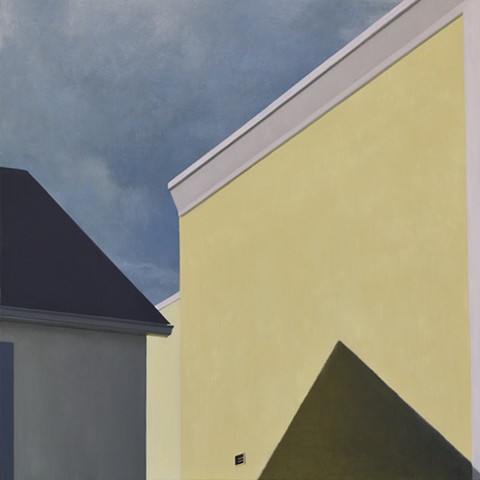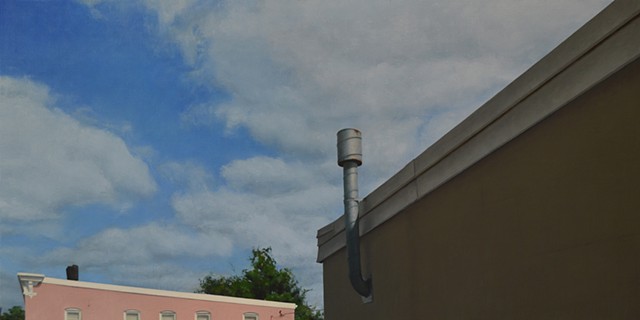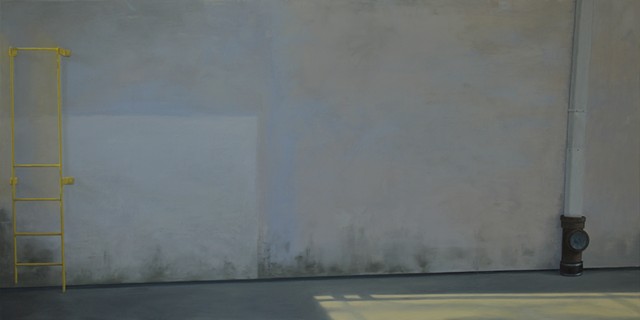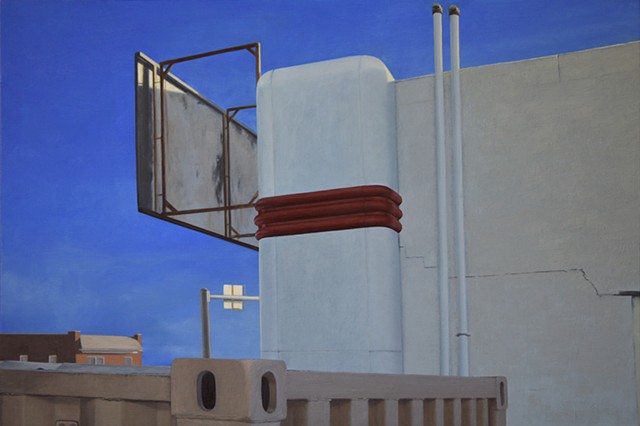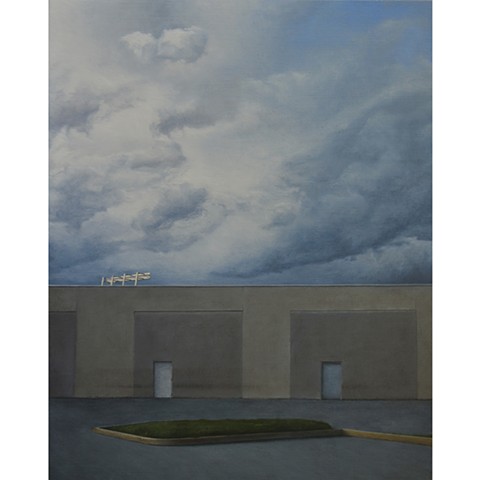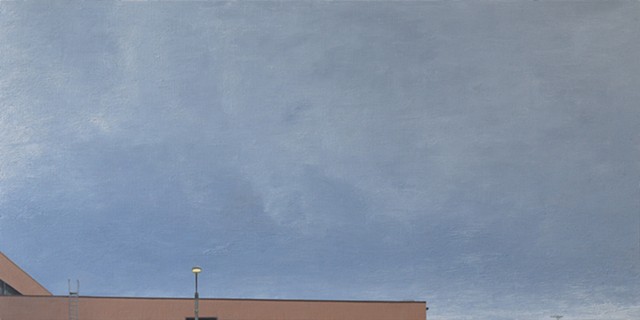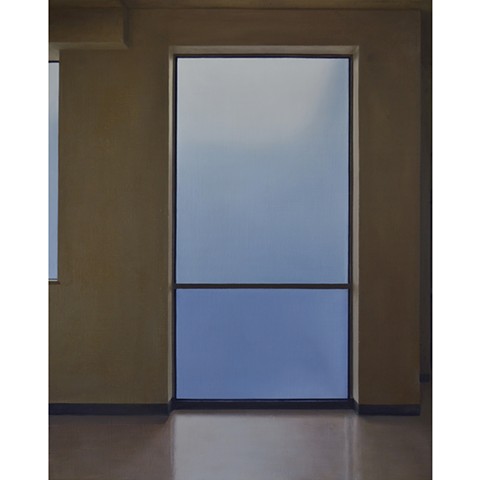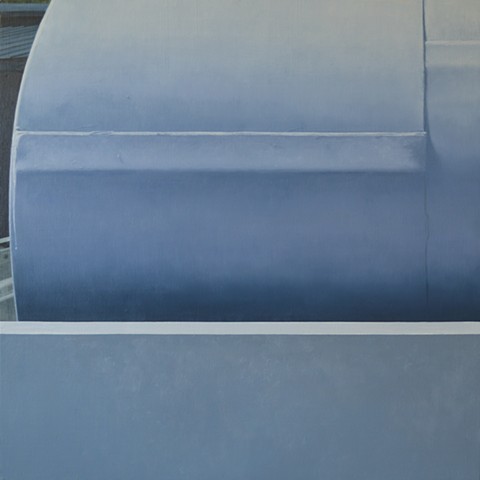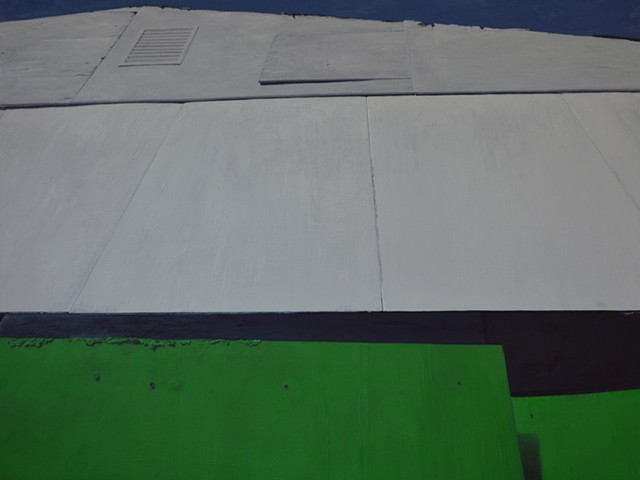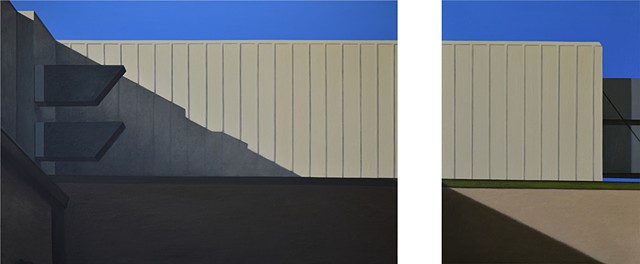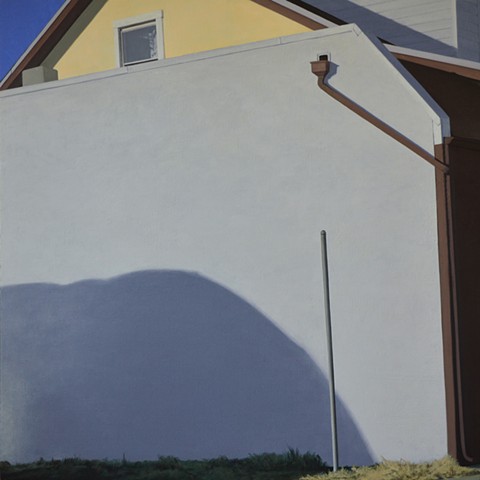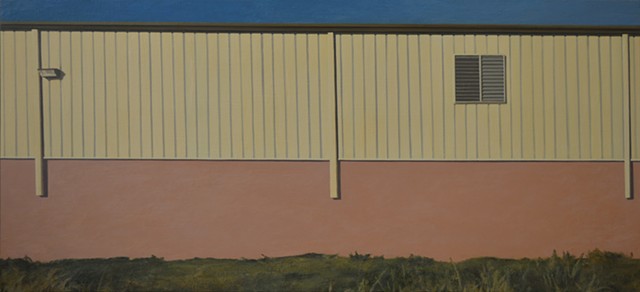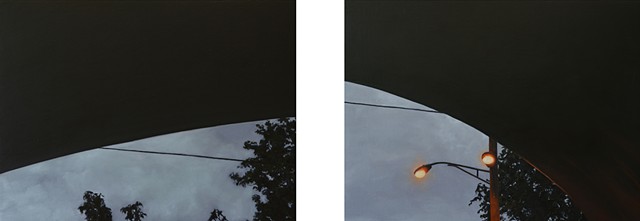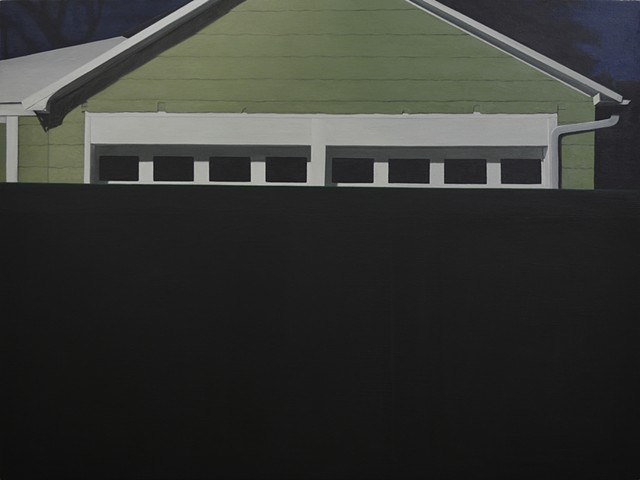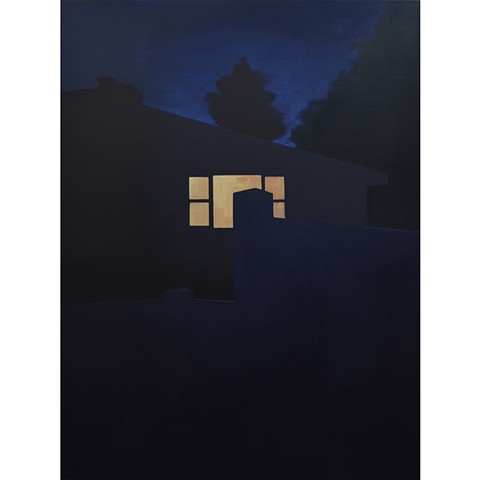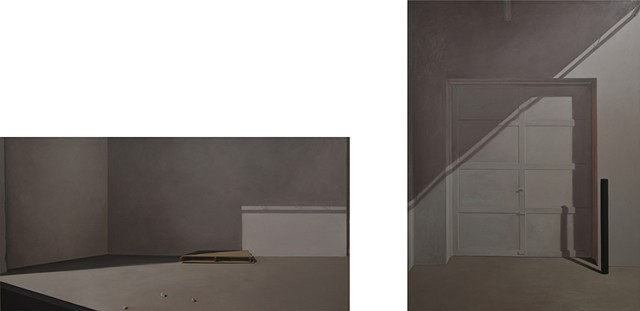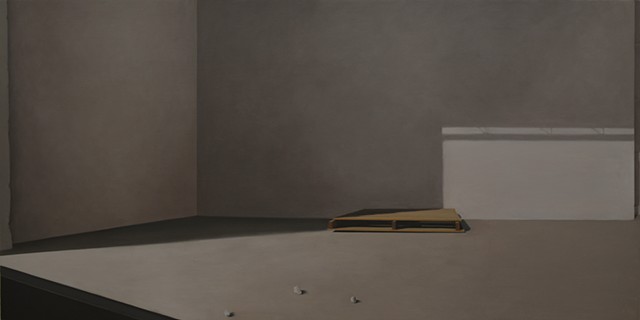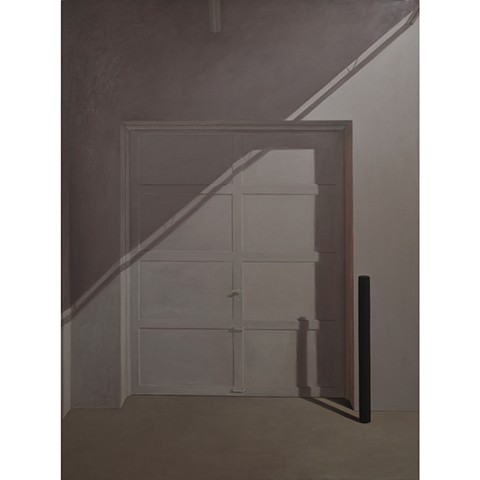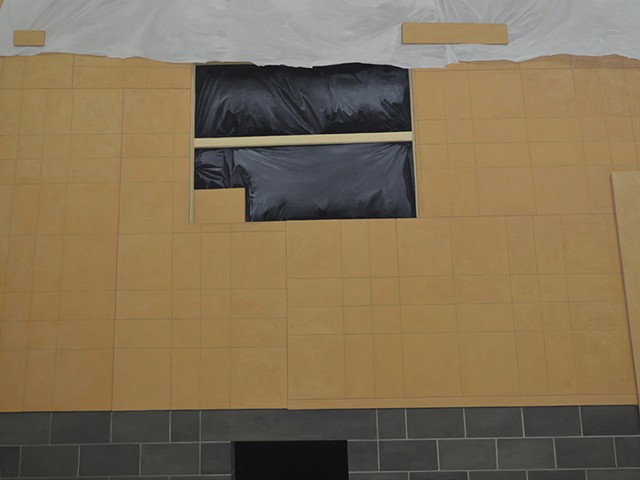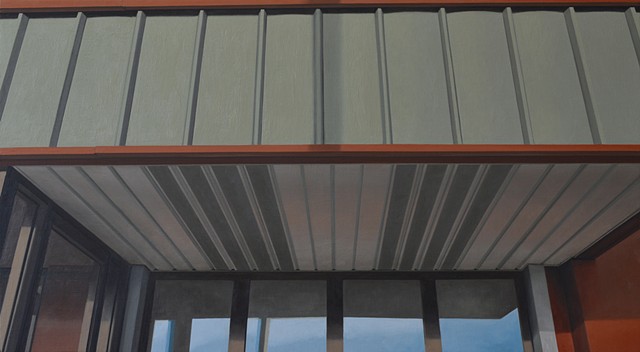Borders
With this body of work, Borders, my paintings continue to become simpler, quieter, more still, somewhat uneasy, always invested in the changing conditions of light. I am constantly delighted by the banal visual elements of specific life circumstances, which so often become more compelling than one might expect. In this spirit—as ordinary, imperfect materials are momentarily engaged in awkwardly arresting formal relationships—issues of abstraction continue to be present in these paintings. The liminal spaces I’ve chosen to explore here are comprised of patterns, textures, shapes, and shadows that appear to have arranged themselves with care, awaiting the viewer’s notice.
The subject matter in this series derives from visual encounters that occur during regular meditative walks. These encounters generally take place in my neighborhood or as I go about daily life. The paintings thus become a record of the everyday forms with which I live. I've long felt that things become valuable to us as a result of the attention we pay to them; in some way, attention translates into appreciation. Consequently, the following observation by Frederick Franck resonated with me deeply when I came across it recently: "I have learnt that what I have not drawn, I have never really seen, and that when I start to draw an ordinary thing, I realize how extraordinary it is."
In my neighborhood, the border between a commercial storage space or industrial building and residential lot is permeable: side-by-side, these structures don't belong wholly to one world or the other. This work focuses on the awkward spaces that develop as a result. These paintings also depict many literal barriers: walls, fences, oscillated strand board, bridges, industrial doorways. I'm interested in what happens at the interface between public and private, between a space to which we are granted access and a space to which we are not granted access.
Geometry infuses these paintings, and to some extent I envision this geometry as evidence of human endeavor—so often overruled or undermined by the passing of time and the inevitability of subsequent actions and events. Fascinating irregularities of form and inconsistencies of logic thus emerge.
As in previous work, I continue to be drawn to very banal and awkward subject matter—none of these places is special. What interests me is the way in which something becomes special through sustained attention. In these forgettable, unprepossessing details, I find quietude. The quietude that accompanies these empty places and "wrong" bits isn't insecure, fearful, or nostalgic. Rather than an indictment, the acknowledgement of these awkward moments becomes about present-ness and the joy of looking. This quietude is comfortable with awkwardness, appreciative and mindful of the fleeting moment. These paintings aren’t hopeful, nor waiting or longing. While these spaces do wear their history, they don’t ruminate over what was or look forward to the future, but instead murmur “this is what is.”
